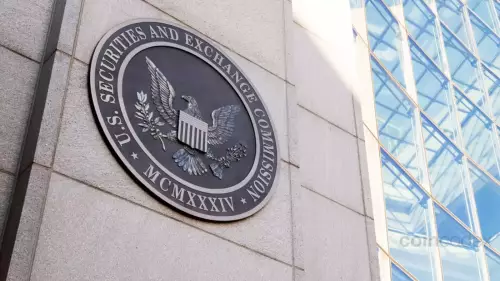Plasma's mainnet beta launch, backed by $2B in stablecoins, is shaking up the DeFi space. This article dives into the implications and future of stablecoin liquidity.

Plasma Eyes the Future: Mainnet Launch and Stablecoin Liquidity
The DeFi world just got a jolt of energy! Plasma launched its mainnet beta backed by a whopping $2 billion in pre-committed stablecoin liquidity. This move positions Plasma as a major player in the stablecoin arena, and everyone's watching to see what happens next.
Plasma's Mainnet Launch: A Closer Look
On September 25th, Plasma officially activated its mainnet beta, accompanied by the token generation event for its native XPL token. The launch included the migration of that impressive $2 billion in stablecoin liquidity from Plasma’s vaults onto the new chain, instantly ranking it among the top blockchains by stablecoin value locked. Think of it as a grand opening with a serious bankroll!
Stablecoin Liquidity: The Name of the Game
This isn't just about big numbers; it's about utility. Plasma's $2 billion is being deployed across more than 100 DeFi partners, including big names like Aave, Ethena, Fluid, and Euler. The aim? To create immediate utility for users and establish deep Tether markets. Plus, Plasma is offering zero-fee USDT transfers within its own products initially, powered by their custom PlasmaBFT consensus mechanism. It's like they're saying, "Come on in, the water's fine (and cheap)!"
The XPL Token: Community and Security
The XPL token is another key piece of the puzzle. It’s designed to secure the network and give ownership to the community. A portion of the tokens were allocated to the public sale, and more will be distributed to smaller depositors and members of the Stablecoin Collective. The XPL token serves as the core for network security, aligning incentives for validators and ensuring those who use and build on Plasma share in its ownership. It's all about aligning incentives and making sure everyone has a stake in the game.
Pi Network Joins the Party at TOKEN2049
Adding another layer to this story, Pi Network made a splash as a Gold Sponsor at TOKEN2049 in Singapore. This high-profile event coincided with Pi Network’s Mainnet launch, signaling its transition to a fully operational blockchain. Pi Network's sponsorship is a strategic move, positioning it as a serious contender in the crypto economy and inviting engagement from institutional partners and developers. The Mainnet launch enables full transferability of Picoin, integration with external platforms, and broader access to decentralized applications.
Why This Matters
Plasma's strategic approach to stablecoin liquidity and community ownership, combined with Pi Network's growing presence, is a sign of things to come. The focus on real-world utility and broad community participation suggests a shift towards more inclusive and practical blockchain applications. This is especially interesting given the regulatory scrutiny surrounding stablecoins. Plasma's architecture, designed for compliance and real-world adoption, could be a major advantage.
Looking Ahead
The mainnet beta is just the beginning. Plasma's focus now is on expanding USD₮ adoption and supporting real-world money flows. If they can deliver on their promises of scalability, low costs, and community governance, Plasma could become a foundational layer for global stablecoin usage. One can't help but wonder what the long-term implications are of this approach, and whether or not other players in the space will adopt similar strategies.
So, what’s the takeaway? Plasma's mainnet launch, fueled by substantial stablecoin liquidity and a community-focused approach, is a bold move in the DeFi space. Keep your "plasma eyes" on this one; it's going to be an interesting ride! And Pi Network's strategic move at TOKEN2049 only adds fuel to the fire. It feels like we're watching the beginning of something big, and I, for one, am grabbing my popcorn.














































































